Dive into the captivating realm of Gruiformes, a diverse order of birds that inhabit wetlands, marshes, and grasslands worldwide.
From the iconic cranes to the secretive rails, Gruiformes encompass a fascinating array of species, each with unique adaptations and behaviors.
Gruiformes, derived from the Latin word “gruis” meaning crane, are characterized by their large bodies, long legs, and often elongated necks. These birds play integral roles in their ecosystems, serving as predators, prey, and ecosystem engineers.
Join us on a journey through the wetlands and grasslands where Gruiformes reign supreme as we uncover the mysteries of their evolution, ecology, and conservation.
From the haunting calls of the bitterns to the majestic displays of the cranes, Gruiformes offers a captivating glimpse into the wonders of the avian world. Let’s foster appreciation for the beauty and importance of these magnificent birds.
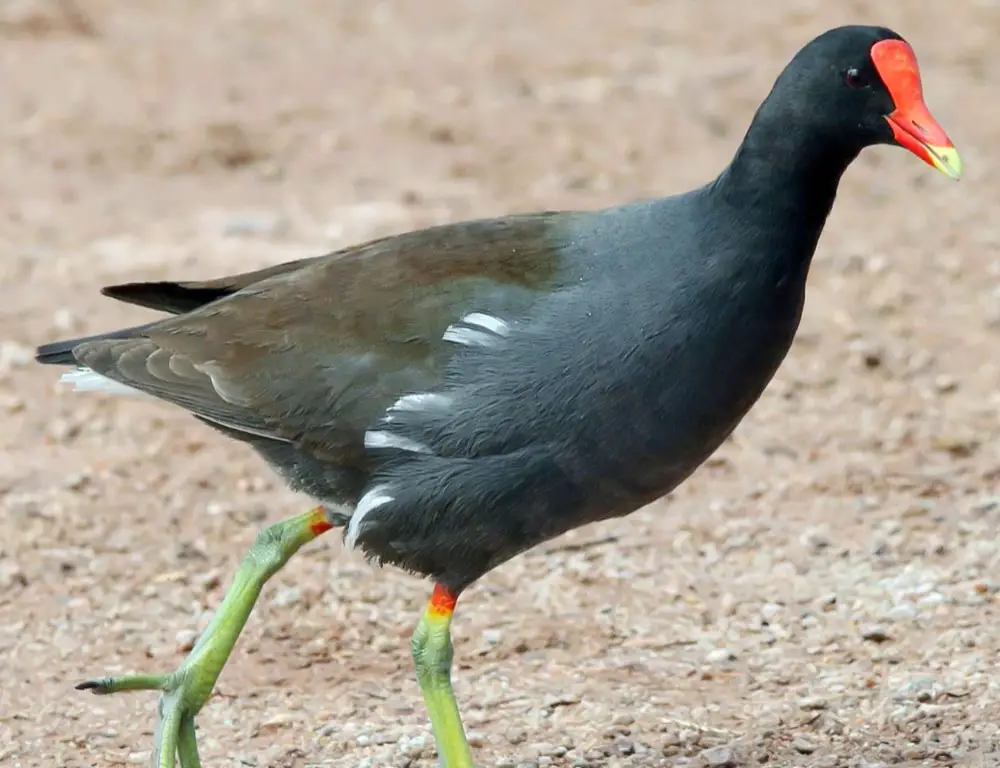
What Are the Identifying Characteristics of the Gruiformes?
Gruiformes, a diverse order of birds encompassing marshland species, exhibit various identifying characteristics that distinguish them from other avian groups.
From their distinctive body shapes to their specialized behaviors, Gruiformes are fascinating creatures that thrive in wetland habitats around the world.
Body Shape
Gruiformes typically have robust bodies with long legs and necks, adapted for wading through shallow water in wetland habitats. Their streamlined shapes allow for efficient movement in aquatic environments, where they forage for food and evade predators.
Bill Shape
The bill morphology of Gruiformes varies depending on their feeding habits. Species such as rails and coots have slender, pointed bills for probing in mud or vegetation, while cranes have long, straight bills suited for grasping prey or vegetation.
Plumage
Gruiformes exhibit a range of plumage colors and patterns, often providing camouflage in their wetland habitats. Many species have cryptic coloration, blending into the reeds, grasses, and marsh vegetation where they reside.
Leg Length
One of the most distinguishing features of Gruiformes is their long legs, which are adapted for wading through shallow water and navigating the dense vegetation of wetlands. These long limbs enable them to move swiftly and gracefully across varied terrain.
Feeding Behavior
Gruiformes exhibit diverse feeding behaviors depending on their ecological niche and dietary preferences. Species such as herons and egrets are primarily piscivorous, feeding on fish, while rails and gallinules are omnivorous, consuming a variety of plant and animal matter.
Vocalizations

Many Gruiformes are known for their distinctive calls and vocalizations, which play essential roles in communication, mate attraction, and territorial defense. These calls vary significantly among species, ranging from haunting cries to melodious songs.
Nesting Habitat
Gruiformes typically build their nests in wetland habitats, choosing locations such as reed beds, marshes, or the edges of ponds and lakes. Their nests may be constructed from various materials, including sticks, grasses, and aquatic vegetation.
Courtship Displays
During the breeding season, Gruiformes engage in elaborate courtship displays to attract mates and establish pair bonds. These displays may involve intricate dances, vocalizations, and aerial acrobatics, showcasing the birds’ vitality and fitness as potential partners.
Migration
While some Gruiformes are migratory and undertake seasonal movements between breeding and wintering grounds, others are resident and remain in their habitat year-round. Migration patterns vary depending on the species and geographic location.
Social Structure
Gruiformes exhibit a range of social structures, from solitary foragers to highly social species that gather in large flocks. Some species, such as cranes, are known for their complex social behaviors, including cooperative breeding and communal roosting.
Habitat Preference
Gruiformes are typically associated with wetland habitats, including marshes, swamps, bogs, and wet grasslands. These ecosystems provide abundant food resources and nesting sites for Gruiformes, supporting diverse populations of birds.
Ecological Role
Gruiformes play integral roles in wetland ecosystems as predators, prey, and ecosystem engineers. By foraging on fish, invertebrates, and plant matter, they help regulate populations of prey species and contribute to nutrient cycling in their habitats.
Taxonomy, Distribution, and Breeding Habits of the Gruiformes
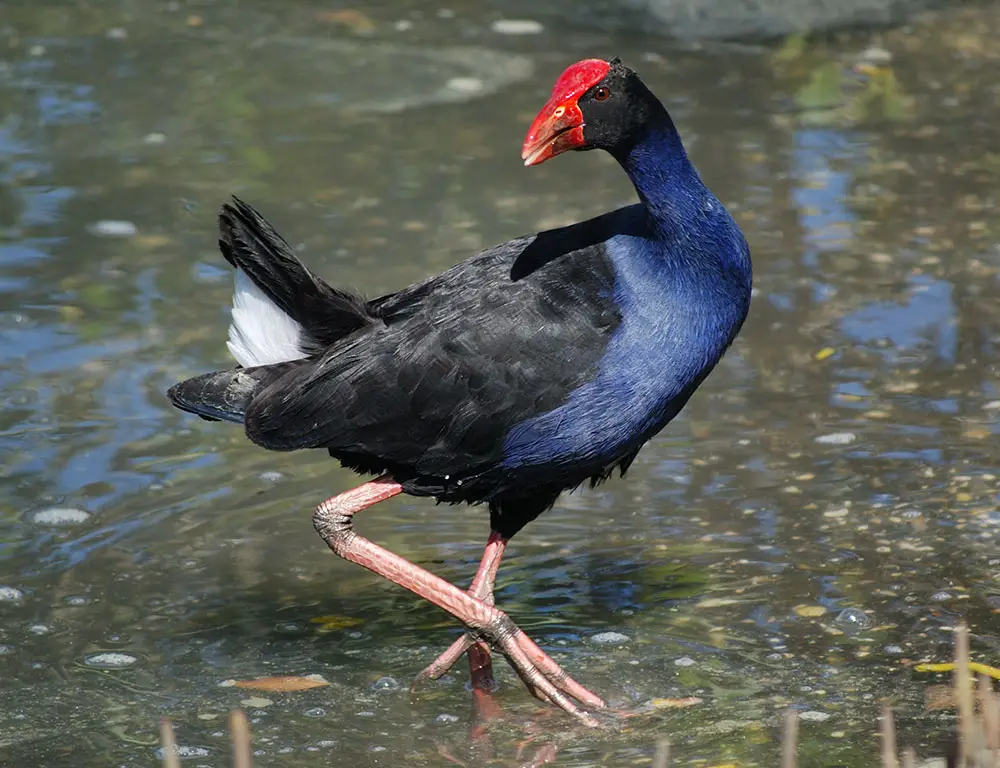
Gruiformes, encompassing a diverse array of marshland birds, exhibit unique characteristics and behaviors that set them apart in the avian world.
Let’s explore these fascinating birds’ taxonomy, distribution, and breeding habits, shedding light on their evolutionary history and ecological significance.
Taxonomy of the Gruiformes
| Taxonomy Level | Classification |
| Kingdom | Animalia |
| Phylum | Chordata |
| Class | Aves |
| Order | Gruiformes |
| Family | Varies by species |
| Genus | Varies by species |
| Species | Varies by species |
Range Map
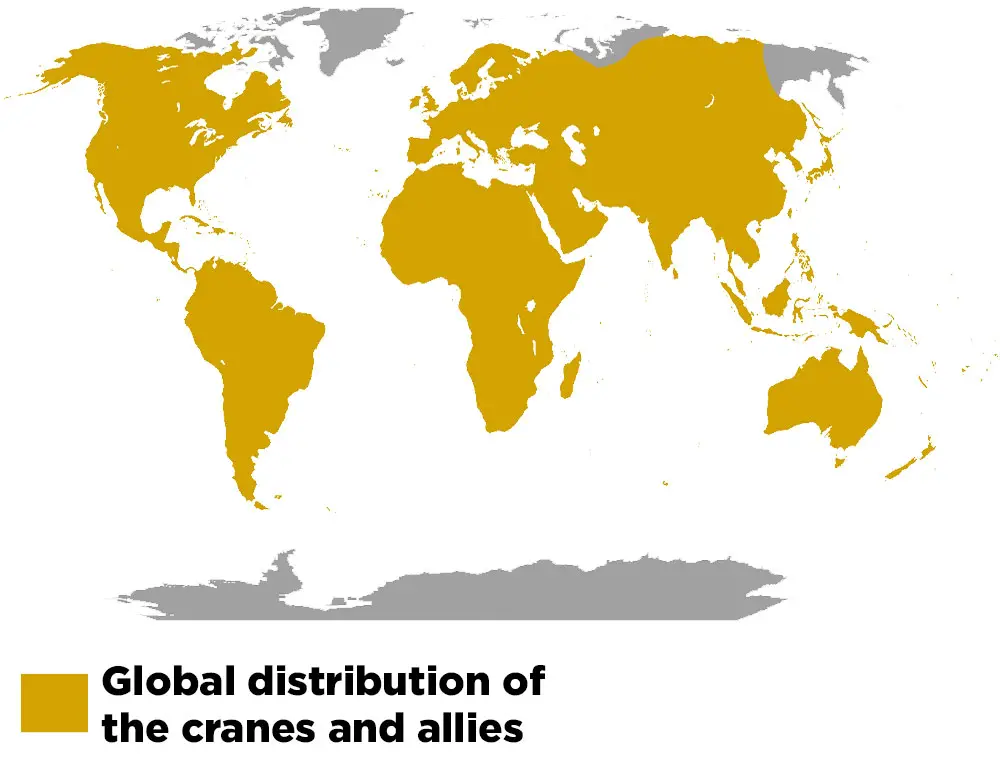
The range map depicts the distribution of Gruiforme species across the globe, highlighting their presence in wetland habitats such as marshes, swamps, and wet grasslands.
From the Americas to Africa, Asia, and beyond, Gruiformes inhabit a diverse range of ecosystems, each with its unique characteristics and challenges.
Food Habits
Gruiformes exhibit a wide range of feeding behaviors depending on their ecological niche and dietary preferences.
While some species are primarily carnivorous, feeding on fish, invertebrates, and small mammals, others are omnivorous, consuming a variety of plant matter, seeds, and insects.
Nesting Habits of the Gruiformes
| Nesting Habit | Description |
| Nest Location | Wetland habitats such as reed beds or marshes |
| Nest Composition | Vegetation, sticks, and other natural materials |
| Clutch Size | Varies by species |
| Incubation Period | Typically around 3-4 weeks |
| Parental Care | Both parents share incubation and chick-rearing |
Breeding Habits
Gruiformes typically breed during the wet season, when food availability is abundant and nesting conditions are favorable.
They construct nests in wetland habitats, lining them with vegetation, sticks, and other natural materials. Both parents share incubation and chick-rearing duties until the young fledge from the nest.
Conservation Status
Many Gruiforme species face habitat loss, degradation, pollution, and climate change threats. Conservation efforts are essential to protect wetland habitats and ensure the survival of Gruiformes and the diverse ecosystems they inhabit.
Additionally, habitat restoration, land management practices, and international agreements are crucial for safeguarding Gruiforme populations and their habitats.
What Are the Common Diseases and Treatments of the Gruiformes?
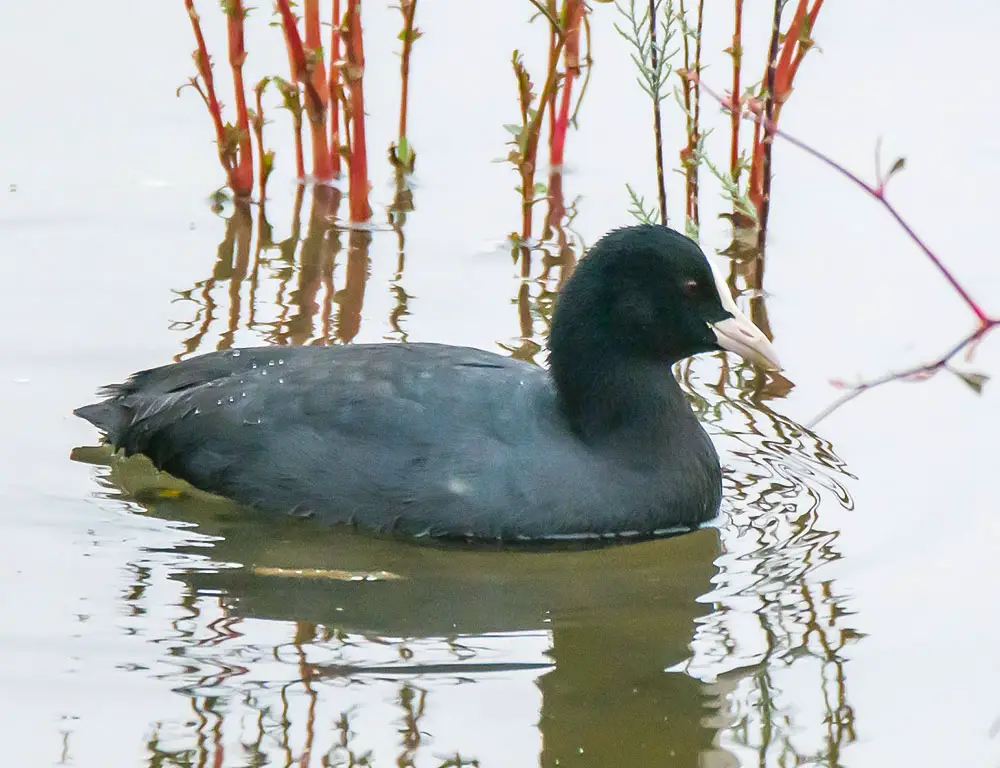
Like any avian species, Gruiformes are susceptible to various diseases and health conditions that can impact their well-being. Understanding common diseases and treatments is crucial for conserving and managing these marshland birds.
Avian Botulism
Gruiformes, particularly those inhabiting wetland habitats, may be affected by avian botulism, a bacterial infection caused by Clostridium botulinum. Symptoms include weakness, paralysis, and difficulty breathing.
Treatment involves supportive care, including fluid therapy and antitoxin administration.
Avian Influenza
Gruiformes can contract avian influenza, a viral infection that can cause respiratory and gastrointestinal symptoms. Treatment focuses on supportive care, including fluid therapy and antiviral medications.
Prevention through vaccination and biosecurity measures is crucial in mitigating the spread of the disease.
Aspergillosis
This fungal infection, caused by Aspergillus spp., can affect the respiratory system of Gruiformes, leading to symptoms such as difficulty breathing and lethargy. Treatment involves antifungal medications and supportive care to improve respiratory function.
Ectoparasites
Gruiformes may be infested with ectoparasites such as mites, lice, and ticks, which can cause irritation and discomfort. Treatment includes topical or systemic insecticides and environmental management to reduce parasite populations.
Lead Poisoning
Ingestion of lead pellets or contaminated prey can lead to lead poisoning in Gruiformes, causing neurological symptoms and organ damage. Treatment involves chelation therapy to remove lead from the body and supportive care to manage symptoms.
Trauma
Gruiformes may suffer from trauma due to collisions with man-made structures, predation, or other accidents. Treatment depends on the severity of the injury and may include wound management, pain relief, and rehabilitation.
Nutritional Deficiencies
Poor diet or inadequate nutrition can lead to nutritional deficiencies in Gruiformes, affecting overall health and reproductive success. Treatment involves dietary supplementation and correction of nutritional imbalances.
Respiratory Infections
Gruiformes may develop respiratory infections due to bacterial or viral pathogens. Treatment includes antibiotics, antiviral medications, and supportive care to alleviate respiratory symptoms.
Stress-related Conditions
Stress can predispose Gruiformes to various health problems, including immunosuppression and increased susceptibility to infectious diseases.
Management strategies to reduce stressors in captive and wild populations are essential for optimal health.
Parasitic Infections
Gruiformes may harbor internal parasites such as nematodes, cestodes, and protozoa, which can cause gastrointestinal symptoms and compromise overall health.
Treatment involves deworming medications and routine fecal testing to monitor parasite loads.
6 Interesting Facts About the Gruiformes
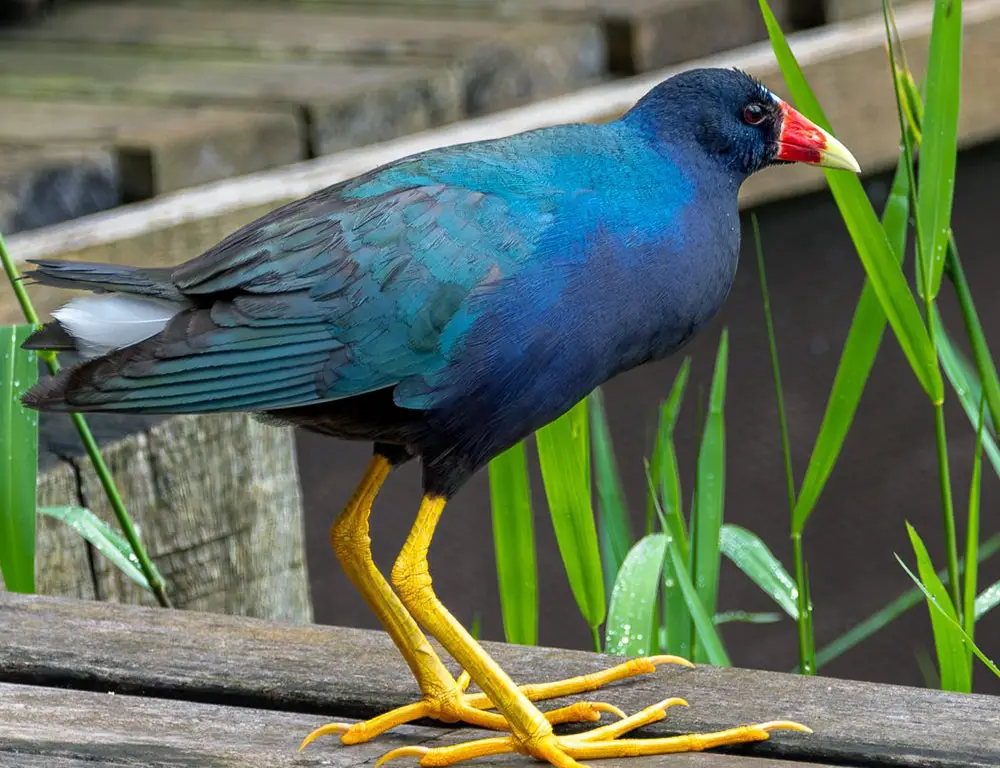
Discover the intriguing world of Gruiformes, marshland birds with unique characteristics and behaviors. Unravel the mysteries of these fascinating creatures through these six exciting facts.
1. Ancient Lineage
Gruiformes has an ancient lineage, with fossil records dating back millions of years. Their evolutionary history provides insights into the ecological dynamics of wetland habitats and the adaptation of birds to diverse environmental conditions.
2. Migratory Marvels
Many Gruiforme species undertake impressive migratory journeys, traveling thousands of kilometers between breeding and wintering grounds. These migratory marvels traverse vast distances from the Arctic tundra to the African savannah to reach their seasonal habitats.
3. Elaborate Courtship Displays
Gruiformes are known for their elaborate courtship displays, which play a crucial role in mate selection and pair bonding. From intricate dances to melodious calls and aerial acrobatics, these displays showcase the birds’ vitality and reproductive fitness.
4. Egg Mimicry
Some Gruiforme species exhibit egg mimicry, laying their eggs in the nests of other birds to parasitize their parental care. This adaptation allows them to bypass the challenges of incubating and rearing offspring, exploiting the efforts of unwitting foster parents.
5. Vocal Diversity
Gruiformes are renowned for their vocal diversity, producing an array of calls, songs, and vocalizations for communication and social interaction.
From haunting cries to melodious whistles, their vocal repertoire reflects the complexity of their social behaviors and ecological roles.
6. Cultural Significance
Gruiformes hold cultural significance in many societies, featuring prominently in folklore, mythology, and artistic traditions. Revered as symbols of wisdom, fertility, and spirituality, these birds have inspired human imagination and creativity for centuries.
FAQs
What does the term “Gruiformes” refer to?
Gruiformes is an order of birds that includes species commonly found in wetland habitats, such as cranes, rails, and coots. These birds are characterized by their long legs, elongated necks, and affinity for marshes and swamps.
Where are Gruiformes typically found?
Gruiformes are distributed worldwide, with species inhabiting wetland ecosystems on every continent except Antarctica. They are commonly found in marshes, swamps, bogs, and wet grasslands, where they forage for food and nest among the vegetation.
What do Gruiformes eat?
The diet of Gruiformes varies depending on the species, but many are omnivorous, feeding on a combination of plant matter, invertebrates, small vertebrates, and aquatic organisms.
Some species, such as cranes, are primarily herbivorous, while others, like rails, are opportunistic feeders.
Are Gruiformes migratory birds?
Many species of Gruiformes are migratory, undertaking seasonal movements between breeding and wintering grounds. Migration patterns vary among species and populations, with some traveling thousands of kilometers to reach their destination habitats.
What conservation threats do Gruiformes face?
Gruiformes are threatened by habitat loss, degradation, and fragmentation due to human activities such as urbanization, agriculture, and drainage of wetlands.
Pollution, climate change, and hunting pose significant conservation challenges for these birds and their habitats.
Conclusion
The world of Gruiformes is a testament to the diversity and adaptability of birds in varied habitats. From the iconic elegance of cranes to the elusive nature of rails, these marshland birds occupy crucial ecosystem niches worldwide.
As stewards of wetlands and grasslands, we must prioritize their conservation to safeguard these avian marvels and the habitats they call home.
By implementing measures to protect and restore wetlands, mitigating threats such as habitat loss and degradation, and promoting sustainable land management practices, we can ensure the continued survival of Gruiformes and the myriad species that rely on these vital ecosystems.
Let us cherish the beauty and significance of Gruiformes and strive to preserve their legacy for future generations to admire and love. May our efforts in conservation serve to uphold the intricate balance of wetland ecosystems.